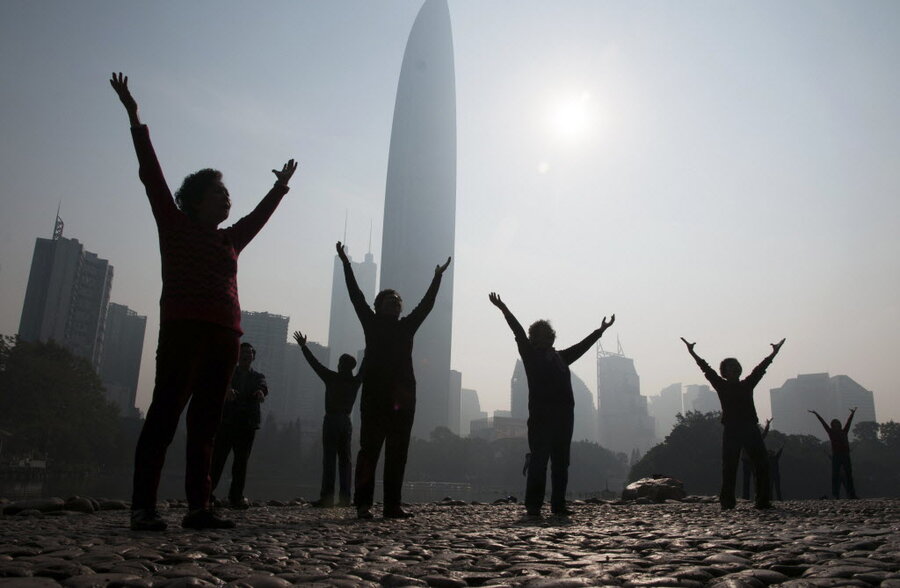If Trump visits China, here’s what he should see
Loading...
After his summit with Chinese leader Xi Jinping, President Trump will no doubt be invited to visit China, assuming the two men are making progress on difficult issues such as trade and North Korea. But Mr. Trump must be foresighted and focus his trip on the place defining the China of the future – not the current China that is much feared and self-isolating.
To see that place, he should visit the Pearl River Delta.
The World Bank recently designated the multi-city delta zone in southern China as the world’s largest urbanized area. It is home to 66 million people, or more than the number of people in Britain. And even though it has only 5 percent of China’s population, it produces a quarter of its exports. More important, as The Economist magazine points out, this urban corridor is China’s most dynamic, open, and innovative region.
The heart of the region is Shenzhen, a city of 11 million people and the industrial “workshop” for global tech firms. Just 37 years ago the area was a sleepy backwater. But it was selected in 1980 by reformist Chinese leader Deng Xiaoping as a special zone to practice new ideas, especially free markets and liberal governance. Anyone looking for the future of China might first venture to Shenzhen, which has become a hub of innovation.
In a new book, “Learning from Shenzhen,” a group of scholars points out that the country’s ruling Communist Party has had to follow the city’s successes more than guide them. Many local leaders in China chose to relocate to Shenzhen to enjoy the greater freedom than in other parts of China. There they have been able to take risks, offering rule of law to foreign investors and relaxing rules for city residents, often in defiance of dictates from Beijing.
“Even the rural-born female migrant workers of China could, in Shenzhen, realize their creative dreams and attain a livelihood of freedom, urbanity, and self-expression,” the book states.
Today Shenzhen is the global cutting edge for people willing to take risks and develop new ideas for technology. University graduates in China flock to the city. As The Economist notes, companies in Shenzhen file more international patents than those in France or Britain.
Such large urban corridors are the “shape of things to come,” according to the United Nations, as they serve as laboratories for change. In its World Cities Report last year, the UN said megacities will succeed if they focus on human rights, the economy, democracy, education, and the environment.
Shenzhen is not yet a well-spring of democracy and human rights. But if its past is prologue, its innovative spirit may lead it that way. And American presidents should be sure to pay it a visit. The future of China is not always made in Beijing.





